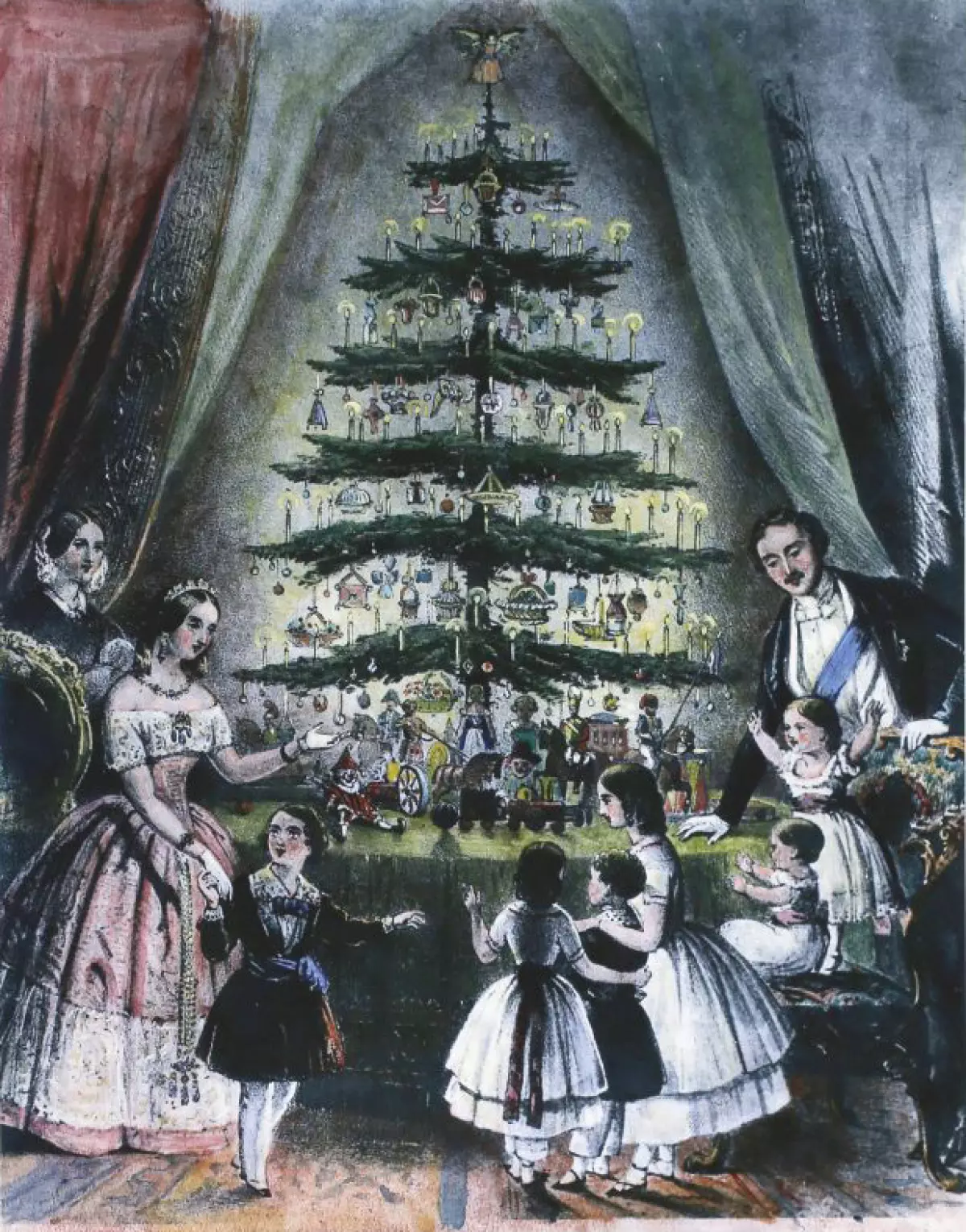Many people who celebrate Christmas have already adorned their homes with beautifully decorated Christmas trees this year. However, it is interesting to note that shortages of Christmas trees and price hikes have also become a somewhat familiar part of the holiday tradition. Let's take a deeper look at how Christmas trees, both real and artificial, have become such a popular and cherished holiday tradition over the years.
The Origins of Christmas Trees
Records from the 15th and 16th centuries indicate that the use of greenery to celebrate holidays predates the term "Christmas tree." Holly and ivy were widely purchased during winter in rural English communities, and private houses and streets were adorned with greenery during this time. These early traditions can be seen as precursors to the Christmas tree. Parishes would often decorate poles with holly and ivy, resembling a winter Maypole. One account even describes a storm in London that toppled a pole designed "for disport of Christmas to the people."
There are many myths surrounding the origins of Christmas trees. One popular story suggests that Martin Luther, who played a significant role in the Protestant Reformation, believed that pine trees symbolized the goodness of God. Another tale from the 15th century involves St. Boniface, who reportedly cut down an oak tree that was being used for a pagan human sacrifice. In its place, a fir tree grew, with its branches representing the eternal truth of Christ. Some versions of this legend suggest that St. Boniface hung the fir tree upside down, leading to the tradition of hanging trees upside down to represent the Holy Trinity. All these stories likely contributed to the spread of the Christmas tree tradition.
However, the true origins of Christmas trees appear to be rooted in present-day Germany during the Middle Ages. In 1419, a guild in Freiburg erected a tree adorned with apples, flour-paste wafers, tinsel, and gingerbread. "Paradise Plays," which celebrated Adam and Eve's feast day (which coincided with Christmas Eve), featured an evergreen fir tree adorned with apples, symbolizing the tree of knowledge. Historical documents show that trees were also decorated with wool thread, straw, apples, nuts, and pretzels.
The oldest Christmas tree market is believed to have been located in Strasbourg, Alsace (now in present-day France), just over the southwestern German border in the 17th century. Unadorned Christmas trees, called Weihnachtsbaum in German, were sold there. The first recorded instance of a decorated indoor tree dates back to 1605 in Strasbourg, where roses, apples, wafers, and other sweets adorned the tree. The demand for Christmas trees was so high in the 15th century that laws were enacted in Strasbourg to curb the cutting of pine branches. By the 1530s, ordinances in the Alsace region limited households to one tree each.
How Christmas Trees Became Popular in the United States
References to Christmas trees in private homes or establishments in North America can be traced back to the late 18th and early 19th centuries. In 1786, a pine tree was mentioned in North Carolina, and in 1805, Moravian missionaries in the Midwest sent students to fetch a small green tree for Christmas at their American Indian school. German immigrants in Texas also decorated trees with moss, cotton, pecans, red pepper swags, and popcorn.
However, the iconic image of a decorated Christmas tree with presents underneath has a very specific origin. In 1848, an engraving featuring Queen Victoria, Prince Albert, and their children gathered around a Christmas tree, published in the Illustrated London News, captured the public's imagination. The image was later reprinted in America's premier women's magazine at the time, Godey's Lady's Book, as "The Christmas Tree." This single image firmly established the Christmas tree tradition in people's minds. Albert's German background led many to believe that he had brought the custom to England when he married Queen Victoria.
The tradition of erecting massive Christmas trees in public spaces, such as the National Christmas Tree at the White House and the Christmas tree at Rockefeller Center, seems to be an American phenomenon that emerged in the late 19th century. The introduction of electricity played a significant role in this development. The first National Christmas Tree was covered in 2,500 light bulbs, serving as a publicity stunt to promote the wonders of electricity. The Christmas tree at Rockefeller Center, first erected in 1931 during the Great Depression, symbolized hope and provided employment to many who were struggling at the time.
The Evolution of Christmas Trees
In December 1964, TIME magazine highlighted a new Christmas trend - artificial trees. These polyvinyl trees looked more realistic than ever before and accounted for about 35% of the $155 million Christmas tree business in the United States. Half a century later, artificial trees still dominate the market. According to a Nielsen survey, approximately 82% of the roughly 95 million American households with Christmas trees in 2018 had artificial trees, while only 18% had real trees.
There are several reasons behind this trend. Climate change has made it more challenging to grow trees, and the Great Recession led to a decrease in tree planting. Moreover, it takes 7 to 10 years for trees to mature for harvest. Additionally, the aging population of tree farmers has resulted in labor shortages. On the other hand, artificial trees are often hailed as being more environmentally friendly due to their lower carbon footprint compared to the transportation required to deliver real trees to retail outlets.
Despite the rise of artificial trees, the National Christmas Tree Association appeals to environmentally conscious consumers by emphasizing the benefits of real trees. Real trees support local economies, as they are primarily grown in the United States and Canada, while many artificial trees are manufactured overseas. Real trees are also renewable resources and recyclable, whereas artificial trees may contain non-biodegradable components.
As a professor in Montreal once said, "We live in an artificial environment. The Christmas tree is one of the few things left that is natural." This sentiment highlights the enduring appeal and importance of the Christmas tree tradition.
In conclusion, the history of Christmas trees is steeped in tradition and cultural significance. From their origins in rural England and medieval Germany to their widespread adoption in North America, Christmas trees have become an integral part of the holiday season. Whether real or artificial, these evergreen marvels continue to evoke a sense of joy, warmth, and a connection to nature during the festive season. Let us cherish this enduring tradition and create new memories with our own beautifully adorned Christmas trees.
 Illustrations of Queen Victoria and Prince Albert and their children gathered around their Christmas tree helped popularize this tradition in the U.S. (Getty Images)
Illustrations of Queen Victoria and Prince Albert and their children gathered around their Christmas tree helped popularize this tradition in the U.S. (Getty Images)

















